
AFMES DoD DNA Lab receives perfect score

Sean Patterson, quality management section DNA analyst, checks expiration dates on reagents in the Armed Forces Medical Examiner System – Armed Forces DNA Identification Laboratory. AFDIL recently underwent a quality assessment where they received zero findings of nonconformance for the first time. (U.S. Air Force photo by Staff Sgt. Nicole Leidholm)
DOVER AIR FORCE BASE, Del. – The Armed Forces Medical Examiner System – Armed Forces DNA Identification Laboratory received zero findings during their quadrennial quality assessment here, recently.
“The assessment was completed without any findings of nonconformance,” said Sean Patterson, ARP Sciences, LLC, quality management section DNA analyst. “In other words, if this was a school exam then we didn’t get any incorrect answers.”
This was the first time AFDIL has received zero findings during a quality assessment.
“This was not a one person or a one section effort,” said Patterson. “[Wadhams and I] are just the first people they see. Everyone from new employees to veterans from (the Armed Forces Institute of Pathology) are the reason we succeeded and helped us get zero findings. Their professionalism is why we are a nationally accredited lab.”
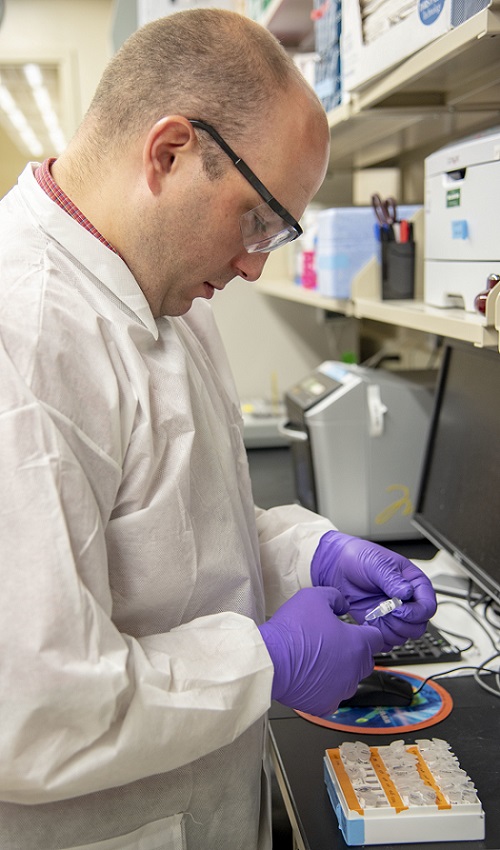
Sean Patterson, quality management section DNA analyst, checks expiration dates on reagents in the Armed Forces Medical Examiner System – Armed Forces DNA Identification Laboratory. AFDIL undergoes both internal and external audits where reagents are checked that they are labeled, tested, have expiration dates and are properly stored. (U.S. Air Force photo by Staff Sgt. Nicole Leidholm)
To maintain their accreditation, the lab is assessed by the American National Standards Institute - American Society of Quality Control National Accreditation Board every four years. Four levels of standards are looked at during the assessment: International Organization for Standardization 17025 international standards for testing or calibration laboratories; ANAB Accreditation Requirements 3028 national accreditation standards; the FBI Quality Assurance Standards for Forensic DNA Testing Laboratories which are discipline-specific standards; and AFDIL’s own collection of standard operating procedures and other documents collectively known as their quality manual.
ANAB sent a team of 11 personnel, including one lead assessor and 10 technical assessors, to AFMES.
The evaluation team was made up of subject matter experts who are or previously had been qualified analysts in the DNA discipline and well versed in accreditation standards.
ANAB picks an assessor and AFMES-AFDIL gets to say yes or no to that individual. Once the lead assessor is assigned, the team is selected and AFMES-AFDIL gets to accept or reject team members as well. Once team is set, documents are uploaded to ANAB for them to become familiar with the AFDIL quality manual.
“The evaluators are comprised of very qualified scientists from local, state or federal laboratories,” said Patterson. “Even the person who was ‘least qualified’ had a decade worth of experience.”
The evaluators spent three days interviewing AFDIL staff members, reviewed internal records and observed laboratory operation to verify compliance with standards.
To prepare for the assessment, training sessions were provided to the staff to strengthen their knowledge of the accreditation process, what to expect during an assessment and were provided with basic information commonly asked during an assessment.
“Preparation for our accreditation is a continuous process,” said Mark Wadhams, ARP Sciences, LLC, quality manager and quality management section-AFDIL contractor. “One of the main goals of accreditation to the ISO standards is to show constant improvement.”
According to Wadhams, the preparation starts with an internal audit where staff members who are trained auditors and qualified analysts, cover all the standards that will be assessed at an upcoming external assessment.
“Assessments now require direct observation of laboratory processes so our staff has to be comfortable with discussing any given procedure that they may be observed performing,” said Wadhams.
Approximately two months before the assessment team conducted their site visit, AFDIL staff members were busy uploading copies of their standard operating procedures, general policies and standard practices for casework to the assessment team.
“It’s like preparing for a college class,” said Patterson. “They read all the material before class so they can come in and have a discussion and ask questions about the material.”
AFDIL staff also had to provide a list of staff changes, all the validations that have been completed since the last assessment along with those summary write-ups for their review, proficiency records and show conformance to educational requirements.
“Getting ready for an assessment, whether internal or external, I check for things common to the laboratories, such as making sure reagents are properly labeled, tested, have expiration dates and are properly stored,” said Patterson. “It’s like going into a kitchen and making sure food is being stored in the freezer if they need to be and ingredients are not expired. The reagents are our ingredients, and we need to make sure that our employees are using the correct ingredients and recipes by making sure we have the most updated protocols.”
On the fourth day, the ANAB team sat down with senior AFDIL staff and went over the assessment. There they revealed that zero findings were found during the duration of their visit.
“I’m very proud of how our team did during the assessment and the zero findings by outside DNA forensic SME validates the expertise of the AFMES-AFDIL team in regards to human DNA Identification,” said Dr. Tim McMahon, AFMES DoD DNA Operations director. “We are routinely being evaluated so this reflects the hard work they’ve put in.”
Disclaimer: Re-published content may have been edited for length and clarity. Read original post.
AFMES embraces resiliency
Article
7/8/2018

AFMES town hall focused on workplace and summer safety, security awareness and resiliency
AFMES DNA FAQs 2018
Fact Sheet
6/26/2018
This Fact Sheet describes the purpose of the Armed Forces Medical Examiner System's Armed Forces DNA Identification Laboratory.
AFMES DoD DNA Operations Fact Sheet 2018
Fact Sheet
6/7/2018
This Fact Sheet describes the purpose of the Armed Forces Medical Examiner System's Department of Defense DNA Operations
AFMES Fact Sheet 2018
Fact Sheet
6/7/2018
This Fact Sheet describes the purpose of the Armed Forces Medical Examiner System.
AFMES DNA lab helps identify the fallen of past conflicts
Article
5/30/2018

DNA can be used to support anthropology of recovered skeletal remains or be used as primary means of identification
AFMES participates in Operation Joint Recovery, introduces MACRMS
Article
3/20/2018

AFMES primary role in the exercise was to familiarize participants in contaminated remains recovery
Earthquake shakes Dover Air Force Base
Article
12/1/2017

On November 30, 2017, a magnitude 4.1 earthquake occurred six miles northeast of Dover, Delaware
Commentary: Medicolegal death investigations from a federal viewpoint
Article
11/24/2017

Investigators at AFMES face unique challenges inherent to the military structure and area of responsibility
DPAA accounts for 183 missing service members in fiscal year 2017
Article
10/27/2017
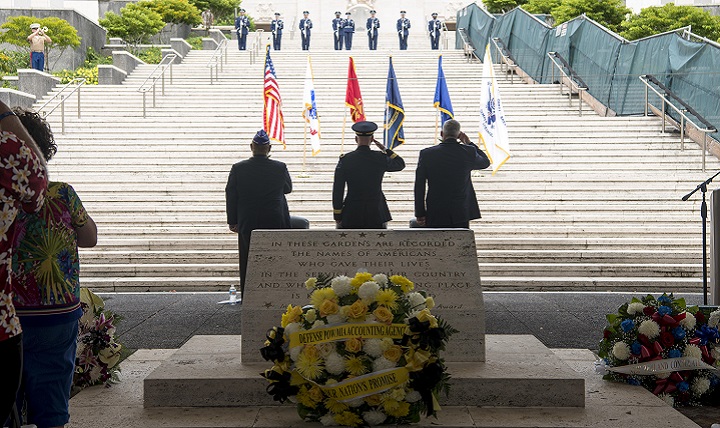
DPAA works closely with the Armed Forces Medical Examiner System and the Armed Forces DNA Identification Laboratory, part of the Research and Development Directorate of the Military Health System
AFMES, helping bring loved ones home one FRS at a time
Article
4/7/2017
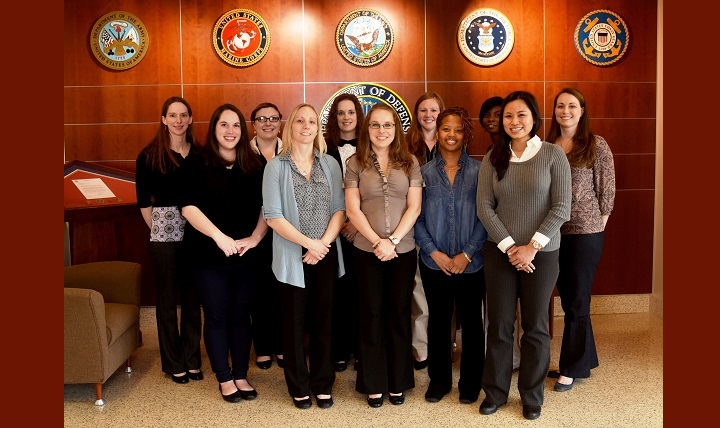
The Family Reference Sample-Laboratory Automation group was established in October 2016
AFMES participates in AAFS
Article
2/21/2017
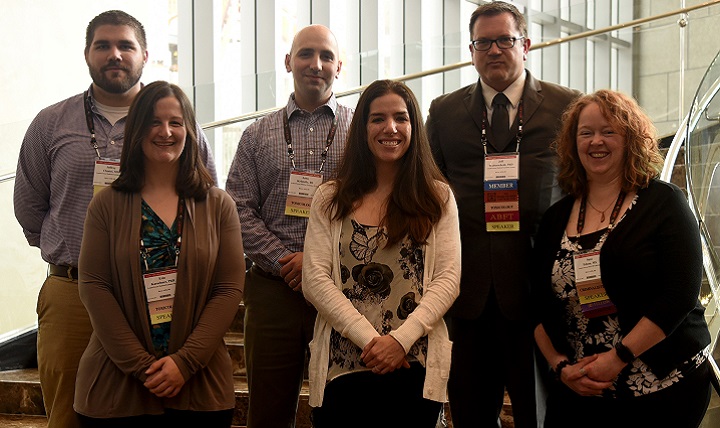
More than 12 personnel from the Armed Forces Medical Examiner System on Dover Air Force Base, Delaware, participated in the American Academy of Forensic Sciences’ 69th Annual Scientific Meeting February 13-18
The Department of Defense's watchdog
Article
2/7/2017
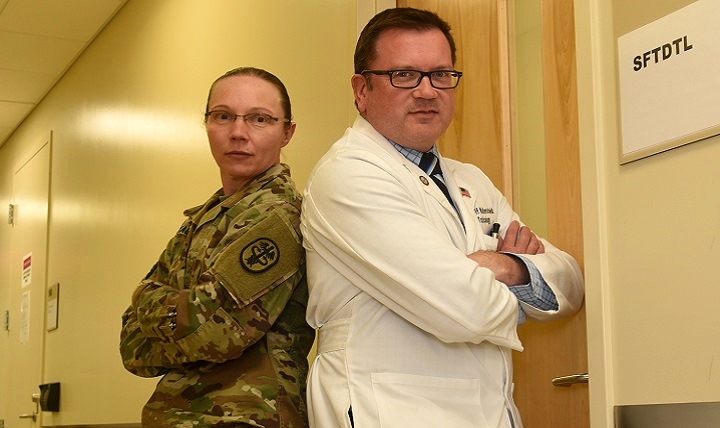
The Special Forensic Toxicology Drug Testing Laboratory is one of three DoD laboratories certified to test for synthetic cannabinoids, or Spice drugs
Science, Ancestry and Identity: What I learned from following my DNA
Article
1/6/2017
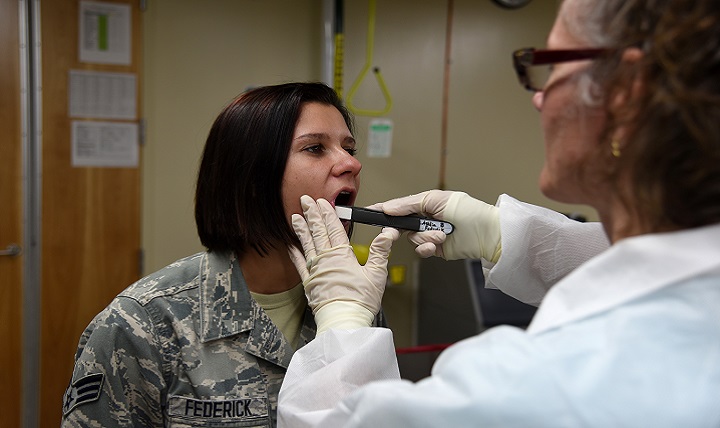
DNA can be used to provide closure to families of the missing
USS Oklahoma 75 Years later: DNA is not just science, it's personal
Article
12/2/2016
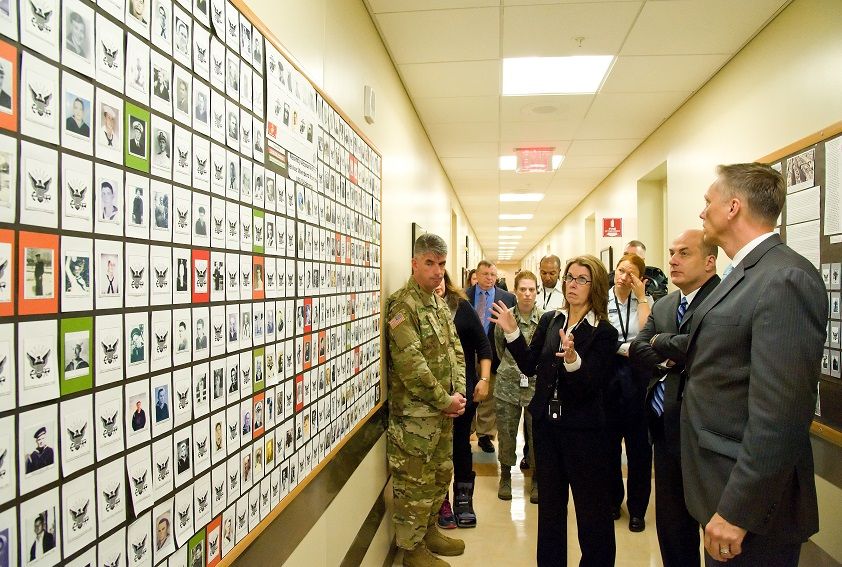
Display board created by DoD DNA Registry analyst dedicated to the history of the USS Oklahoma
Sean Patterson with the USS Oklahoma History Board
Photo
12/2/2016

Sean Patterson, Armed Forces Medical Examiner System Department of Defense DNA Registry DNA analyst, stands in front of the USS Oklahoma History Board Nov. 29, 2016, at AFMES on Dover Air Force Base, Delaware. The board tells what happened to the USS Oklahoma during the attack on Pearl Harbor and the difficulty of identifying the 429 service members ...






















.png)











No hay comentarios:
Publicar un comentario